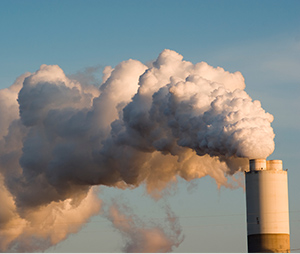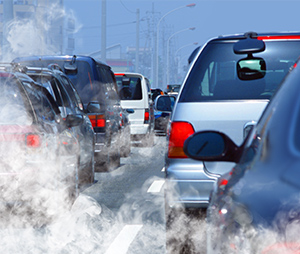UQUEENS introduction
Fine dust and disease
Disease-causing fine dust can be prevented by UQUEENS.
The cause of fine dust
Fine dust can be divided into two cases. One is solid fine dust from sources such as chimneys (primary occurrence) and the other is when a substances that come out of the source of gas cause chemical reactions with other substances in the air and become fine dust. (secondary occurrence).
Sulfur oxides emitted in the process of burning fossil fuels such as coal and oil combine with water vapor and ammonia in the atmosphere. Or, fine dust is produced through chemical reactions in which nitrogen oxides from automobile exhaust combine with water vapor, ozone, and ammonia in the atmosphere, which is a secondary occurrence. The reason why secondary generation is important is that the proportion of secondary generation due to chemical reactions accounts for about 2/3 of the total fine dust generation in the metropolitan area alone.
Fine dust also occurs a lot when cooking at home using gas stoves, electric grills, and ovens. Fine dust occurs differently depending on the recipe, but baking or frying dishes that use oil generate more fine dust than boiling ingredients, and generate at least 2 to 60 times higher than the usual fine dust concentration.
The problem of fine dust
When exposed to fine dust for a long time,
our body's immunity drops sharply and causes various diseases.
 Asthma
Asthma
Fine dust accumulated in the bronchial tubes and lungs by penetrating deep into a person's alveoli causes various respiratory diseases and reduces immunity. It can cause asthma and shortness of breath and worsen vision.
 Headache
Headache
Drinking fine dust with high concentrations of harmful heavy metals such as lead, arsenic, and zinc can cause coughing, sore throat, and skin trouble. It causes a serious headache, dizziness, and difficulty breathing. Among them, sulfuric acid ions and nitric acid ions are adsorbed with dust in yellow dust, turning into oxides and entering the lungs with breathing. If this substance enters the lungs, it can cause bronchitis, asthma, or chronic obstructive lung disease.
 Atopy
Atopy
Ultra-fine dust, smaller than pores, penetrates the pores and causes dermatitis such as atopy, so people with acne or atopic dermatitis should refrain from outdoor activities.
 Insulin Resistance
Insulin Resistance
A study found that PAH, the main ingredient of air pollution fine dust, increases insulin resistance among senior citizens, especially overweight elderly women. Insulin resistance is due to the poor function of insulin that lowers blood sugar, preventing cells from burning glucose effectively. If insulin resistance is high, the body cannot use blood sugar effectively, which can lead to metabolic syndrome, heart disease, and diabetes.

In addition to fine dust, viruses of various respiratory diseases such as swine flu, SARS, Ebola, Hong Kong flu, and MERS are prevalent in modern society. Because these viruses are airborne, wearing masks alone can prevent infection, and you must also wear masks to prevent respiratory diseases. Also, as mentioned above, fine dust occurs when cooking, so you must wear a mask to manage and protect your health, from self-living students to cooks and housewives.





